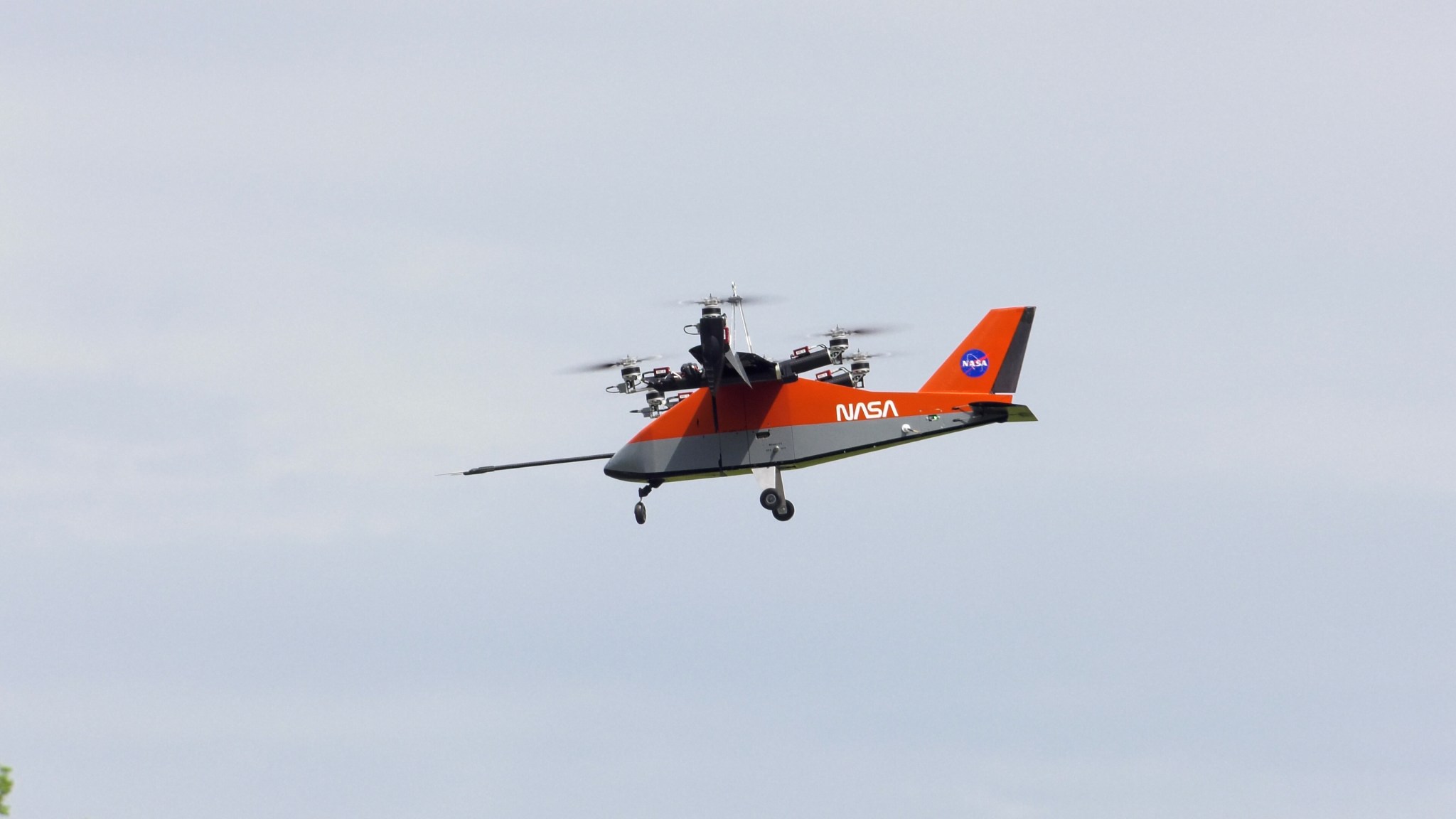NASA has launched a series of flight tests to enhance air taxi technology, focusing on electric Vertical takeoff and landing (eVTOL) systems. On April 22, 2025, the agency conducted a free flight test of its RAVEN Subscale Wind Tunnel and Flight Test (RAVEN SWFT) aircraft at the City Environment Range Testing for Autonomous Integrated Navigation at NASA’s Langley Research Center in Hampton, Virginia. This initiative aims to provide essential data for developing flight control systems that can stabilize and guide air taxis under various flying conditions.
As the air taxi industry evolves, accurate real-world data is crucial for improving aircraft designs. Currently, many companies involved in air taxi development keep their flight data proprietary. To counter this, NASA is producing public, non-proprietary data using its scaled-down RAVEN SWFT aircraft, which serves as a model for manufacturers looking to design their own air taxis.
Siena Whiteside, who leads the RAVEN project, emphasized the importance of high-risk flight research in advancing automated and autonomous aircraft. She stated, “As we investigate these types of vehicles, we need to be able to push the aircraft to its limits and understand what happens when an unforeseen event occurs.” For instance, the team aims to analyze scenarios such as motor failures during flight.
The RAVEN SWFT aircraft is a compact model, weighing just 38 pounds with a wingspan of six feet. It features 24 independently moving components, known as “control effectors,” that adjust the aircraft’s motion during flight. This design makes it a suitable platform for testing advanced flight controls and conducting autonomous flight research.
NASA’s Langley Research Center has been the primary site for these tests. Researchers initially utilized the center’s 12-Foot Low-Speed Tunnel in 2024 before advancing to remote-controlled flight tests. The initial flights were tethered, but the team is now conducting free flights, gathering valuable data on the aircraft’s behavior in real-world conditions.
Insights gained from wind tunnel experiments have significantly reduced risks associated with flight testing. By simulating actual flight conditions in the wind tunnel, researchers collected data that streamlined the transition from design to actual flight. During these tests, they were able to refine the aircraft’s computer control code in real time, implementing software updates in under five minutes, a process that typically takes weeks.
To enhance its flight control capabilities, NASA developed custom software for the RAVEN SWFT in collaboration with MathWorks. This partnership, established under a Space Act Agreement, accelerates the design and testing of flight control methods applicable to future aircraft. The RAVEN SWFT serves as a crucial steppingstone toward a larger aircraft, estimated to weigh around 1,000 pounds, which will also resemble an air taxi.
This larger aircraft is being designed in collaboration with the Georgia Institute of Technology and will serve as an acoustical research tool, helping engineers understand the noise generated by air taxi-like vehicles. By continuing to gather and share data publicly, NASA aims to bolster U.S. leadership in developing safe, quiet, and affordable advanced air mobility operations.
Through these innovative flight tests and collaborations, NASA not only contributes to the advancement of air taxi technology but also paves the way for a future where urban air travel is efficient and accessible.
